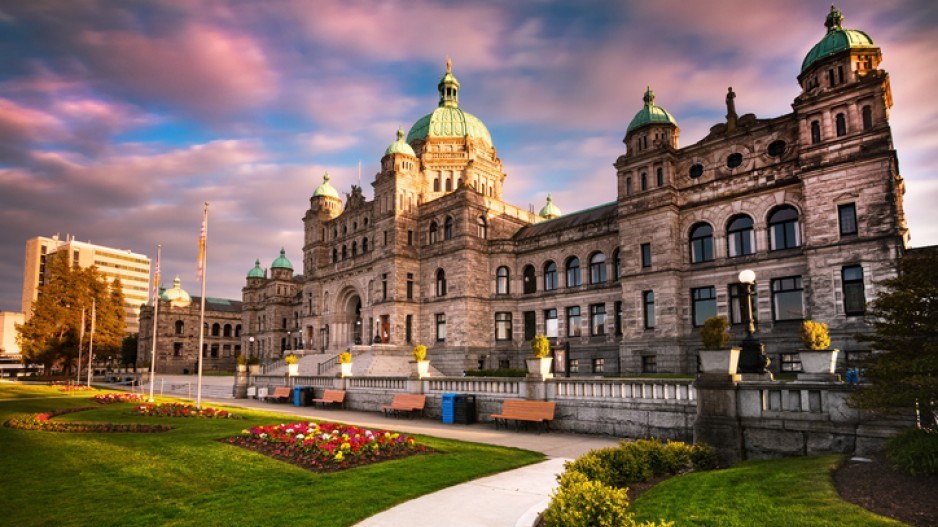As British Columbians await the final stretch of the provincial electoral campaign, we have not witnessed a superb change in the perceptions that likely voters have of the province’s leaders.
The absence of BC Conservative Party candidates in many ridings has not manifested itself as a jump in support for the main opposition party. There is room for growth for all parties, but the incumbent government began the campaign with a sizable emotional advantage that has so far not been dented.
Our latest survey shows the BC New Democratic Party (NDP) with a 12-point lead over the BC Liberals (48% to 36%) among decided voters. The BC Green Party is stable at 13%, while the BC Conservatives – who are running candidates in 19 of the province’s 87 constituencies – have fallen to 2%. Since Research Co. and Glacier Media took an initial look at the campaign in late September, the BC New Democrats have gained four points, while the BC Liberals have dropped one.
In a campaign where some voters have already cast their ballots or received them in the mail, the timing of policy announcements is paramount. The BC Liberals have offered seemingly appetizing nuggets to the electorate, particularly in the areas of taxation and public safety. Still, the needle has not moved much on a personal basis for BC Liberals Leader Andrew Wilkinson. His approval stands at 40% (up one point) and only 27% of likely voters regard him as the best possible head of government.
For the third party, there are serious challenges ahead. The approval rating for BC Green Party leader Sonia Furstenau is 33%, down four points. While Furstenau is seen as the best person to handle environmental concerns (33%, with Horgan at 29%), the party remains below its historic numbers of 2017. Their share of the vote in Vancouver Island is currently at 21%, short of the 28% the Greens received in the last provincial election.
A campaign with reduced interaction with voters has not been particularly dashing for any leader. About one in four voters say their opinion of Horgan (24%) and Wilkinson (26%) has worsened, and 16% feel the same way about Furstenau.
When likely voters ponder specific issues, Horgan maintains his party’s traditional hegemony over the BC Liberals as the preferred leader to handle health care (48% to 24% for Wilkinson), education (42% to 23%), housing, poverty and homelessness (40% to 23%) and accountability (37% to 28%).
The incumbent premier is also ahead on topics where the people who held Wilkinson’s job used to hold leads when compared to Horgan’s predecessors: economy and jobs (42% to 30%), crime and public safety (37% to 30%) and energy (34% to 27%). In addition, on an issue that Gordon Campbell and Christy Clark never faced – the COVID-19 pandemic – likely voters prefer Horgan over Wilkinson by a margin that is larger than two to one (52% to 20%).
Our look at the most important issue facing the province continues to show a divided province. This time, housing, poverty and homelessness and the economy and jobs share the top spot (each at 25%), followed by health care (23%), COVID-19 (8%) and the environment (7%).
While we will see a record number of British Columbians casting ballots by mail, 23% of decided voters say they could change their minds before they send back their vote or head to their polling station. This is a decidedly larger proportion than the 4% of decided American voters who told us last month they could switch before the United States presidential election takes place.
The proportion of decided voters in British Columbia who may flip jumps to 29% among those who are currently supporting the BC Green Party. If three in 10 Green voters do change their mind, the main beneficiary would be the BC NDP. At this stage, 27% of BC Green supporters from 2017 have already decided to vote for the BC New Democrats, while only 2% have selected the BC Liberals.
The poll also facilitates a chance to review the motivations of decided voters. More than two in five (43%) look primarily at the party’s ideas and policies, while 21% focus on the party’s leader and 14% concentrate on the candidate in the riding. There are some nuances unique to specific contenders. The leader is a bigger issue for BC NDP voters (24%) than BC Liberals and BC Greens (20% and 14% respectively). Also, while only 4% of decided voters in the province cast a ballot out of disgust with other contending candidates, the proportion rises to 11% among BC Green supporters.
Results are based on an online study conducted from October 5 to October 7, 2020, among 750 likely voters in British Columbia, including 698 decided voters in the 2020 provincial election. The data has been statistically weighted according to Canadian census figures for age, gender and region in British Columbia. The margin of error, which measures sample variability, is plus or minus 3.6 percentage points for likely voters and plus or minus 3.7 percentage points for decided voters, 19 times out of 20.




